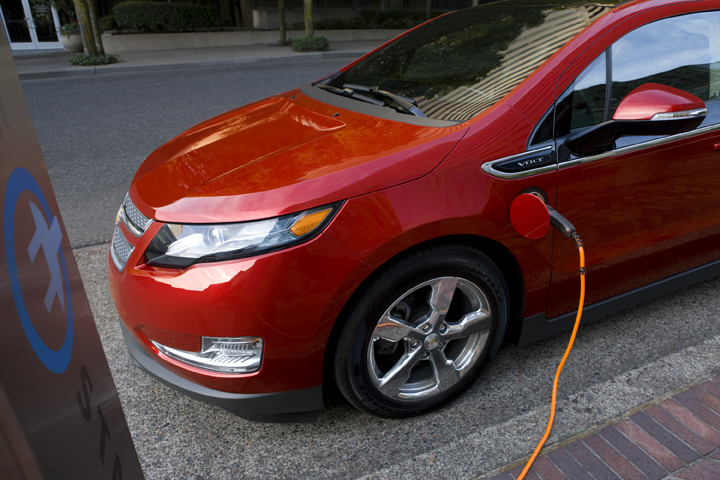Few things seem to set off a certain part of the political spectrum like the Chevrolet Volt, the extended-range electric car from General Motors.
It's been on sale exactly one year, so we think it's rather too early to deem the Volt a success or a failure, though that hasn't stopped its critics.
When criticizing anything, however--the Volt included--it's usually incumbent on the critic to get the math right.
Off by a factor of 10,000
Yesterday, The Street posted a lovely takedown of the math offered by a critic who claims Volts carry quarter-million-dollar subsidies. The Street's contributor Anton Wahlman gently points out that the calculations were slightly off.
In fact, he suggests they were wrong by a factor of 10,000--or four orders of magnitude. That's what you would call an embarrassing error.
It's worth pointing out that Wahlman emphasizes that he is against government subsidies to industry, calling himself "somewhere way to the right of Rush Limbaugh" on that topic. Which makes his analysis all the more trenchant.
He also notes that, "the idea that the Volt was somehow a government invention is about as accurate as the idea that Al Gore invented the Internet. It has no relation to the truth whatsoever." He liked the Volt he tested, by the way.

2011 Chevrolet Volt
Here's the story. Four days ago, we dissected in some detail Matt Drudge's uninformed war against the Volt. He promptly posted two more anti-Volt headlines the next day.
One of them linked to an article on Michigan Capital Confidential citing a study by James Hohman, assistant director of fiscal policy at the Mackinac Center for Public Policy.A quarter of a meeeeellion dollars !!
The report claims that every Chevrolet Volt is the beneficiary of a quarter of a million dollars of state and Federal subsidies. Yes, the car with a 2012 retail price of $39,995 carries $250,000 of Your Tax Dollars in its load bay.
Hohman added up all the known state and Federal incentives to obtain a "total value offered to the Volt," not only for General Motors but also its suppliers.
A total of "18 government deals that included loans, rebates, grants and tax credits" are included. The total loan amounts are apparently listed in full, even though the loans are intended to be be paid back with interest.
Hohman then divided the sum by the number of Volts sold as of November 30. The result prompted him to call the Volt "the most government-supported car since the Trabant," the East German plastic-bodied two-cylinder minicar.
The denominator problem
As Wahlman notes, the egregious flaw in this calculation is "the denominator problem"--to what base of cars do you apply the analysis?

2011 Chevrolet Volt Production Line
Dividing the number of Volts sold to date (6,468 as of November 30) into the total incentives that apply to all Volts past, present, and future is either dopey or intellectually dishonest.
You could as easily say that on December 15 last year, the day the first Volt was delivered to a retail buyer, it carried a stunning, incredible, unconscionable $1.5 BILLION in subsidies. You'd be doing the same thing: dividing by the number of Volts sold, or 1.
More reasonably, fast-forward to the end of next year, by which time the two-year total of Volt sales is likely to be about 60,000. The number plummets to $25,000. And so on.
Actual number: $25
Wahlman instead divides the supposed $1.5 billion in incentives by a projected total of 60 million cars over the next 25 years that will use elements of the Voltec range-extended electric drive technology in today's Volt. That calculation puts the amount at, ummm, $25. Or a dollar a year.
Slightly different, eh?
We personally tend to think that a dollar a year is a reasonable amount to subsidize a domestic battery-electric car industry. Reasonable minds may differ, however.
We can address the question of whether the $1.5 billion total in state and Federal incentives is valid another time. Critic Hohman notes that depending on various factors, it could vary from $300 million to $3 billion.
We recommend reading Wahlman's entire article on The Street (note that there are four pages, but the links are tiny).
+++++++++++













